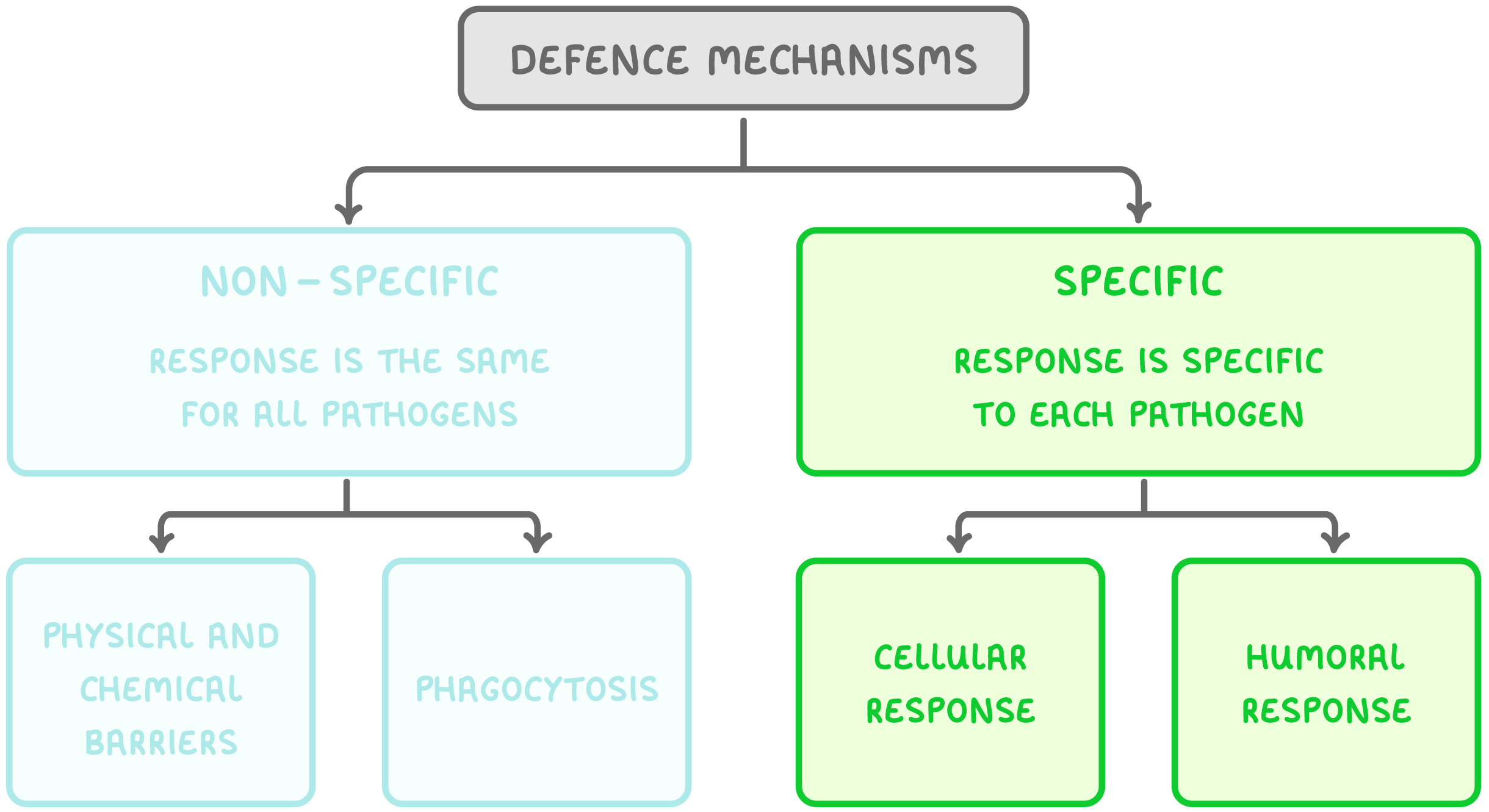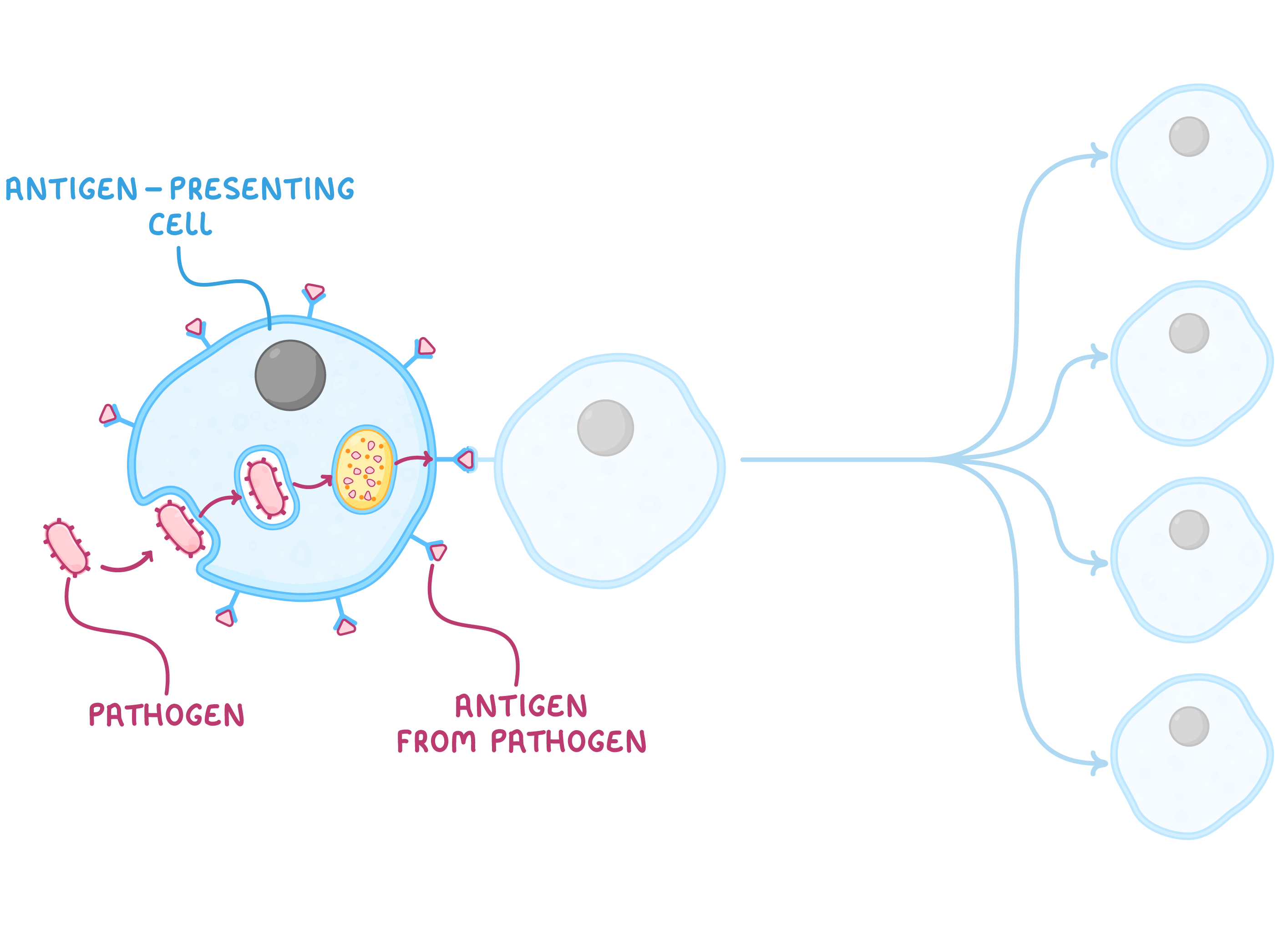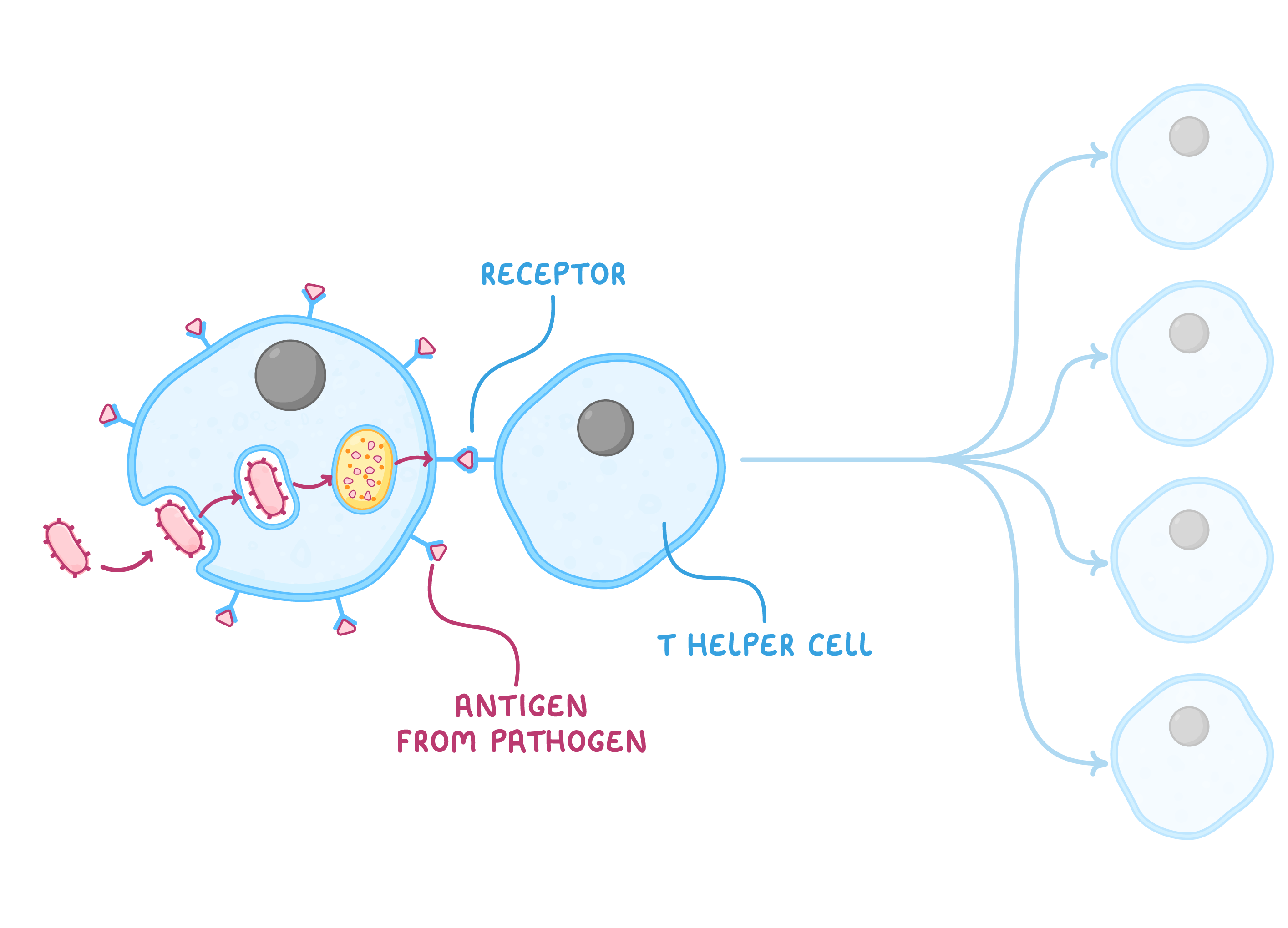Specific Immune System: The Cellular Response
This lesson covers:
- The different types of lymphocytes
- The different types of T cells
- The role of T cells in the cellular response
Specific defence mechanisms Specific defence mechanisms are slower than non-specific defences, but they produce a unique response for each type of pathogen. They also provide long-term immunity against specific pathogens.  |
The specific immune response depends on a type of white blood cell known as a lymphocyte. These cells are produced in the bone marrow. There are two types of lymphocyte:
|
T cells You need to know about the following types of T cell:
These cells have receptors on their cell-surface that bind to complementary antigens on antigen-presenting cells. They produce interleukins (a type of cytokine) which stimulate B cells or phagocytes. T helper cells can also form memory cells or T killer cells.
These cells kill abnormal and foreign cells by producing a protein known as perforin. This protein makes holes in the cell-surface membrane, causing it to become freely permeable and causing cell death.
These cells suppress the immune system after pathogens have been destroyed. This helps to prevent the immune system from mistakenly attacking the body cells.
These cells provide long-term immunity against specific pathogens. They provide a rapid response if the body is re-infected by the same pathogen. |
Stages of the cellular response The cellular response is so-called because T cells will only respond to antigens presented on body cells rather than antigens within body fluid. The stages of the cellular response are as follows: |
 Macrophages engulf pathogens and display their antigens on the cell-surface. They are now known as antigen-presenting cells. |
The cloned T cells can carry out different functions:
|

